By Zhang Chunfeng
The War to Resist US Aggression and Aid Korea successfully protected China’s territorial security, defeated the self-claimed invincible imperialist US army, defended the tranquility of China’s homeland, presented the iron-strong determination and dynamism by the Chinese people, won a comparatively peaceful environment for the development of the newly-established socialist country, and impressed the whole world
with no one underestimating our strength.
President Xi Jinping pointed out that in the magnificent War to Resist US Aggression and Aid Korea (hereinafter referred to as the War), the heroic Chinese People’s Volunteers (hereinafter referred to as CPVs) always showed their patriotism by putting the interests of the country and the people above anything else as well as by striving for the dignity of the motherland and the nation at any cost; their heroic spirit by daring to sacrifice their lives for defending the country; their optimism by bravely facing all kinds of hardship and keeping an upbeat morale; their loyalty to the revolution by fulfilling the mission entrusted by the motherland and the people at the expense of anything else; as well as their internationalist view by fighting for the cause of peace and justice for all mankind.
All these spirits established during the War are the best manifestation of the Chinese nation, with patriotism as its spiritual core. They are also the priceless spiritual wealth that will surely inspire the Chinese people and the Chinese nation to overcome all difficulties and obstacles to defeat all powerful enemies.
During the War, the city of Shenyang became “the rear of the front and the front of the rear” with its special strategic role. Under the leadership of the Party, the people in this city actively practiced the Great Spirit in the War to Resist the United States and Aid Korea with patriotism and internationalism as the core. They bravely shouldered their responsibilities presented their generosity despite all kinds of difficulties.
Throughout the War, Shenyang played an important role as a key transportation hub, a strategic production base and a major supportive stronghold, making irreplaceable contributions to the victory of the War. At the same time, Shenyang also established its distinctive style featuring integrity, determination and dynamism.
I. Important Contribution by the Heroic City of Shenyang to the War
During the War, Shenyang, as a central city in Northeast China, an important transportation hub and a stronghold of heavy industries, became the most important strategic rear base for the War. In addition to combats on battlefields, modern warfare is also about the competition on large-scale industrial strength and logistics support capacity. In other words, battlefield support is a key factor for winning a war.
Peng Dehuai, Commander-in-chief of the CPVs of the War, once said that logistics support contributed to more than half of the victory this war! As great times produce great people, Shenyang played an important role in the logistics support for the War. Through some historical archives and documentary materials, we can get a glimpse of the contribution by the heroic city in terms of logistic support for warfare.
i. Shenyang was an important strategic production base during the War
During the War, the weapons and equipment used on the front line mainly depended on China’s own domestic manufacturing, except some from the Soviet Union. Shenyang, as the first large industrial city liberated by the PLA, shouldered its full responsibility as a strategic production base even though it was still recovering from the civil war. Shenyang supported the front line of the War with the full strength of the whole city, and strived to supply what was needed in the front.
Shenyang provided urgently needed weaponry including guns, ammunition, combat aircraft and their spare parts; equipment such as military picks and surgery devices as well as daily necessities like quilts, clothes and fried flour. This part of contribution by Shenyang turned out to be greatly useful for supporting our soldiers in the front.
1. China’s own aviation industry was born in Shenyang amidst the need for air combat in the War.
After the War began, an increasing number of wounded aircrafts needed to be repaired and spare parts required in this regard were in shortsupply in terms of both number and type. Purchasing spare parts abroad and supplying lightly wounded aircrafts by workable parts from heavily wounded ones were no longer enough. Facing such short supply, China had no other choice but to manufacture on its own.
At the beginning of 1951, Air Force No. 5 Factory in Beiling, Shenyang (the predecessor of Shenyang Aircraft Corporation, SAC) began to produce the most frequently damaged aircraft parts in the War, such as landing gear guards, gun covers, wingtips, ailerons, nose covers and tail fins. In March 1952, the factory put forward the measures for higher proficiency in repairing and greater capacity for manufacturing, and began to actively produce more spare parts. The factory started with the nose landing gear of the MiG-15 prototype, which was one of the most complicated parts of the aircraft in terms of mechanical manufacturing. After working hard and overcoming various difficulties such as the shortage of tools and fixtures, China finally completed its first home-made landing gear on April 25. Later on, the trial production of large parts such as wings was completed, greatly improving the city’s capacity in manufacturing aircraft parts.
In January 1951, Shenyang No. 3 Rubber Factory was upgraded from a mere bicycle tire producer into one of aircraft wheels. In February of that year, without any data, technology or equipment, the factory overcame many difficulties and trial-produced the first batch of aviation wheels after founding of PRC, for the MiG-15 fighter jets on the front line. In May, this type of wheels was officially put into large-scale production, supporting MiG-15 and other aircrafts in the War. The successful experiment and massive production of the first batch of aviation wheels effectively supported the front line and ended the history of China’s inability to manufacture aircraft wheels. In September 1953, the assembly lines for aircraft rubber wheels at Shenyang No. 3 Rubber Factory was put in operation, with four types of wheels in production. The factory became the first production base of aviation tires and safety tires in China, once undertaking 80% of the production tasks for aviation tires.
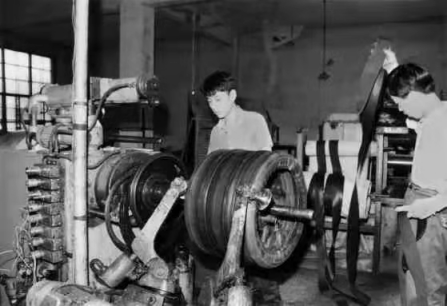
In December 1950,Air Force No. 5 Factory received the task of producing 3,000 auxiliary fuel tanks within just three months. At this moment, the factory was assembling 100 Soviet MiG fighter jets day and night. As for the auxiliary fuel tank, there were no draft drawings, raw materials (aluminum plate), or any experience in producing such things.
Workers first use yellow straw board for the outer cover with pig blood, tung oil and lime as adhesives. However, this formula failed. Then, riveted white iron sheet was used but this try failed too because of poor air tightness. At the end, one worker suggested that the rivet head be wrapped with solder and then welded to the seam of the outer cover, which turned out to be successful. Three months later, 3,027 auxiliary fuel tanks were sent to the air force. Since then, the factory received the task of producing 6,000 more auxiliary fuel tanks. As of May 1951, nearly 10,000 auxiliary fuel tanks were ready to use, ensuring the needs on the front line of the War.
2. New weapons developed with self-reliance and hard work, a great contribution for the War
In order to meet the needs by the War, Shenyang No. 724 Factory (i.e. No. 52 Factory from 1949 to 1951), No. 53 Factory and other enterprises presented great self-reliance by producing a batch of weapons urgently needed in the battlefield under difficult conditions yet in a timely manner. For example, in the early days of the War, the CPVs did not have anti-tank weapons so soldiers needed to face enemy tanks only with grenades, blasters and explosive packs. As anti-tank weapons were urgently needed from the rear, China’s weaponry industry immediately organized a task force to do theoretical research and conduct pilot experiments.
As the main body responsible for this task, the No. 52 Factory had neither draft drawings nor experience in this regard. However, workers analyzed the trophy samples (though incomplete) from the front for dissecting, analyzing, testing, improving and experimenting. In just six months, the factory came up with the 90mm model of anti-tank rocket launcher and two types of anti-tank rockets. In 1951 only, 5,000 rocket launchers were produced, together with 200,000 rockets. These weapons were promptly sent to the front line and appeared to be very useful in combating the “hedgehog strategy” by the US army. According to statistics, from 1949 to 1953, the No. 724 Factory successively developed China’s first generation of anti-tank rocket launchers, artillery rocket launchers, 60mm and 82mm mortars, 105mm grenades (an improved version from the US), 120mm mortars and S-122mm grenades. A total of 126 kinds of products were developed, of which 24 kinds were used on the front line.
Under the slogan of “producing one more bullet that can kill one more enemy”, the workers of the No. 53 factory in Shenyang rose to the challenge, increased shifts and extended working hours, so that the output of bullets could increase year by year. In 1951, the output increased four times compared with 1950, and in 1952, the number doubled from that of 1951, reaching an annual output of 142.79 million bullets. In this regard, Shenyang made great achievements in providing weapons and support to ensure the victory of the War.
3. Overcoming difficulties for manufacturing 100,000 military picks, so that these gadgets can play a big role on the battlefield.
In October 1950, the central government issued an emergency order for Shenyang to produce as many as 100,000 military picks yet within 20 days. The military pick was a very important tool for the CPV soldiers on the battlefield, yet this kind of equipment must be produced under strict technical requirements. The product must be strong, light and easy-to-use: error must not exceed 100 grams.
Shenyang Heavy Machinery Factory overcame many difficulties in manufacturing military picks. Without any supply for raw material, the factory mobilized all the employees to collect scrap steel pieces by themselves and molded them into what they needed. Workers creatively invented a new way that combined both hammering and molding. The military picks were then, under strict standards, sharpened, flattened, edged and quenched according to different technical requirements. Finally, each military pick was weighed and those surpassing the standard by 100 grams or more were adjusted for perfection.
After a full round of inspection with each standard being reached, the military picks were finally painted in black, wrapped in packages and shipped to the destination in batches. After the tireless efforts of all employees of the factory, the task was completed one day ahead of schedule. This ensured that these desperately needed equipment were distributed to the hands of the CPVs before joining the War. Military picks, though small, did make huge contribution on the battle field on the Korean Peninsula.
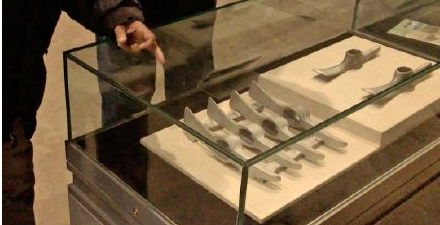
4. Mobilizing all forces to produce military uniforms to address the basic needs of soldiers on the front line.
In 1950, the CPVs went to the Korea Peninsula in autumn, with the cold winter around the corner. The front line urgently needed a large number of military quilts. Shenyang received the task to produce five batches of military quilts. In this regard, the CPC Shenyang Municipal Committee held a special meeting to carry out extensive mobilization. The city government and district governments successively established quilt processing committees. Each quilt factory in Shenyang overcame all kinds of difficulties, such as low capacity, poor conditions and manpower shortage, organized and mobilized 2,799 sewing machines with 2,799 technicians. More than 100,000 women came to the factory, lined the needles, worked day and night, and devoted themselves to the production of military uniforms. Shenyang successively produced 550,000 sets of cotton-padded clothes, quilts, cotton hats, socks, gloves, etc., and sent them to the front line in time to make sure that our soldiers were free from coldness.
5. Providing surgical equipment and various medicines in urgent needs for the front line of the War, particularly the pesticides for combating US bioweapons.
From 1950 to 1952, the Shenyang Medical Equipment Factory produced more than onemillion pieces of surgical or medical equipment, which proved essential for the rescue of wounded volunteers in the War. To meet the needs from the front line, the Shenyang Northeast Chemical Pharmaceutical Factory (formerly the Northeast Pharmaceutical Factory) managed to multiply its output of medicines.
For example, from 1950 to 1953, the annual output of glucose injection was 15 tons, 59 tons, 103 tons and 274 tons respectively; the annual output of sulfathiazole from 1951 to 1953 was 10 tons, 37 tons and 61 tons respectively. In particular, in order to successfully combat the bioweapon by American invaders, the Shenyang Northeast Chemical Pharmaceutical Factory, for the first time in China, successfully developed the pesticide code-named DDT in May 1951, which was then put it into massive production for supporting the anti-bacterial warfare on the Korean Peninsula and which also filled the gap of China in this area.
6. Providing fried flour and other daily necessities for the minimum living requirement by volunteers
If there was no fried flour, the basic living for Chinese troops could not have been guaranteed. Since the second round of battles on the Korean Peninsula, fried flour became the main food for the CPVs. This kind of food was definitely good but it was also difficult to produce on a massive scale. In December 1950, the Northeast Bureau of the CPC Central Committee held a special meeting for fried flour with cooked meat in Shenyang, and issued targets to organs under the bureau, relevant agencies and institutions of Shenyang, and the Northeast Military Area, for providing fried flour. The order was sent on December 22, 1951, requiring 3.25 million kilograms of fried flour in about a month.
According to incomplete statistics, a total of 331,300 kilograms of fried flour were produced in Liaoning Province, accounting for more than 10% of the total number. Specifically, Shenyang alone made 200,000 kilograms, accounting for around 60% of the whole province. From a report file dated December 10, 1950 by the CPC Shenyang Municipal Committee to the Northeast Bureau of the CPC, it can be seen:
The task for Shenyang of cooking meat for the soldiers in the War to Resist US Aggression and Aid Korea is 21,000 kilograms and has then been finished with extra outcome in just 7 days at 22,255 kilograms of cooked pork or beef in 1,113 boxes. The first batch of fried flour amounts to 120,000 kilograms, and the second batch amounts to 80,000 kilograms, a total of 200,000 kilograms; more than 180,000 kilograms has been completed, and the remaining part will be done within one day or two days.
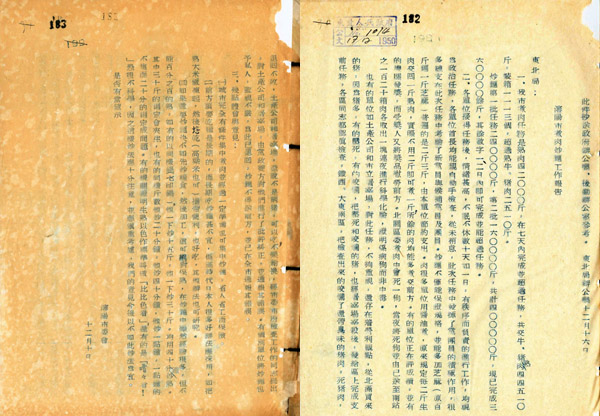
The Work Report of Shenyang on Cooked Meat and Fried Flour on December 10, 1950
ii. Shenyang is an important rear stronghold for guaranteeing the warfare supply during the War.
In order to solve logistical challenges for the CPVs to fight on the Korean Peninsula and to ensure the need for long-term warfare, from January 22 to January 30, 1951, a logistics meeting of the CPVs was held in Shenyang (referred to as the Shenyang Logistics Meeting in historical documents). The meeting concluded that the War pushed the logistics support of Chinese army to a new stage, because in the past, the PLA army would just find supply at hand as it pushed forward the front line, but now all kinds of supply needed to be transported from the rear to the front.
This change meant an overhaul of logistical affairs and marked the beginning of the logistics work in China’s modern warfare. As is known to all, modern warfare heavily relies on logistics support. The quality of logistics supply not only directly determines the scale of battles, but also the course and outcome of the War. In short, modern warfare requires modern logistics support.
The War took place in a modern era, so logistics support was put on a strategic position. The practical experience of the War proved that to win a modern war, it is imperative to establish a logistics support system that is in line with the requirements of a modern war. In this regard, Shenyang made irreplaceable contribution to the logistics support of the War.
1. Setting up a war service office in Shenyang and a supply center of military depot in the Shenyang Railway Station.
In order to ensure the needs from the front, the Shenyang Municipal Government established a war service system in November 1950 in charge of logistics supply. The Shenyang Civil Affairs Bureau set up a war service office, while civil affairs sections of all districts or counties under the municipality set up war service sub-offices. Moreover, each district government appointed a war service assistant, while even each village established its war service committee for help. A war service system was established across the province from cities to districts and from counties to villages, forming a huge network for logistics supply that was crucial to the front line warfare. The people in Shenyang worked with concerted efforts and showed their uttermost dedication: all strings of small effort were made together into a strong rope of support for the front line to ensure the final victory.
Shenyang is a national transportation hub. The troops, the war service personnel and battlefield materials that went to the Korean Peninsula all needed to pass through this transportation hub. Meals on the way and the supply of fodder for military horses were the key issues. The CPC Shenyang Municipal Committee decided to set up military food supply centers in the Shenyang Station, the Sujiatun Station and other stations, responsible for temporarily organizing food for CPVs passing through the city. The Shenyang Station is located in Heping District and former Nanshi District. The district Party Committee and the district government attached great importance to the supply of military depot, and instruct the district civil affairs agency to shoulder the responsibility by careful handling with no mistakes. The tasks often came very urgently, but comrades of the civil affairs agency all fulfilled their responsibilities by working day and night as well as staying ready to be summoned at any time.
At that time, there was no large-scale food factory in the district. Every time they received a requirement for food delivery to the military depot, comrades from the whole agency all rushed out to buy all the steamed buns, stuffed steamed buns, sesame cakes and biscuits from individual vendors and restaurants in the district, and then delivered them overnight to the hands of volunteers for a full meal before going to the front line. In addition, residents in neighboring blocks were mobilized to deliver boiled water and ready-to-eat food to the military depot, so as to ensure the needs of the depot for offering volunteers with a square meal.
2. Establishing a strong, iron-like transportation network in the War that “cannot be blasted and broken”.
Having ample food and ammunition is the basic guarantee for winning a war. Among all factors for warfare, transportation is the top priority. From the very beginning of the War, railway transportation played a huge role. In order to ensure consistent and coordinated command, the governments of China and the DPRK co-established the China-DPRK Joint Railway Transportation Command (located at the Shenyang Railway Bureau) in Shenyang.
Shenyang is a key hub of the railway transportation network in Northeast China, and areas such as Andong (now Dandong) and Kuandian, under the jurisdiction of the Shenyang Railway Public Security Bureau, are cross-border ports with the DPRK. In order to ensure the safety of logistical transportation for the War, the railway guards patrolled the railways, bridges, tunnels, stations and trains for days and nights. In order to stabilize the rear support and smash the enemy’s sabotage conspiracies, the railway guards launched a desperate fight with the enemy on both visible and invisible fronts.
When it comes to the trains, the first train full of arms that crossed the Yalu River to participate in the War was dispatched at 16:00 on December 26, 1950, from the locomotive depot of the Shenyang-Sujiatun Railway. It set foot on the territory of the DPRK at 16:37 on December 28. During the War, 39,203 heavy-load carriages (74.6% of China’s total then) were mobilized to transport supplies. These vehicles were all registered, numbered, dispatched and loaded by the staff at the Shenyang Railway Bureau located in the outpost of the War. In order to ensure the transportation of supply for the War, the staff members put forward the slogan of “prioritizing military transportation for the front”. They also adhered to the principle of “four priorities” for freight, for allocation, for loading and for delivery. This played an important role in ensuring that Chinese volunteers to the DPRK could join the battles in time with promptly delivered arms and supplies.
In the process of transportation, the smart war service personnel created many methods to avoid the attack by the enemy’s aircrafts in the confrontation with the US military, such as underwater bridges, merged operations, and relay river-crossing. The underwater bridge, also known as the invisible bridge means to build a new bridge with a deck slightly lower than the water surface near a previous bridge that was earlier bombed by the enemy aircrafts. Upon the reconnaissance of US aircrafts, they could only see the damaged bridge so they would just go away. The term combined operation is to connect more than two groups of trains into one group, and use two or three locomotives to push or pull the enlarged train. This method can, under good conditions, give full play to the maximum power of locomotives for quickly transporting supplies to the front line. The method relay river-crossing means only the carriage carts go over the bridge, with the locomotive left on this side of the river, and be pulled by another locomotive on the other side of the river (because, generally speaking, newly-repaired bridges could not hold locomotives that are heavier than carriages). When a train wanted to cross the river, the engineers, technicians and military staff would place the locomotive behind all the carriages so as to push them to the opposite bank of the bridge, while then another locomotive waiting on the other side of the bank would pull them away for the front line.
With great courage to face the difficulties or even sacrifice themselves, China’s war service personnel also showed their creativity, ingenuity and hardworking spirit when working for this cause. Our war service personnel have therefore built an iron network of transportation that, despite air strikes from atop, guaranteed the safe operation of vehicles in the front. In this period, the Shenyang Railway Bureau successively sent a total number of 12,200 workers to the DPRK to participate in the War, with more than 1,800 people winning military honors but 256 employees sacrificing their lives on the front line.
Despite the enemy’s crazy attack on our logistics transportation, trucks on the road were also indispensable for completing the requirement of “building an iron network of transportation line that cannot be broken and ensuring the final victory by sending food and ammunition to the front line”. In the early days of the War, drivers could not hear the sound of enemy aircrafts in time due to the loud noise of their own engines, so they did not dare to drive with lights on in the evening. The driving distance per night, therefore, was only 30 kilometers to 40 kilometers with a high possibility of accidents such as crashes and rollovers. After March 1951, mobile air defense sentries were set up in key areas to monitor the sky. When there were no enemy aircrafts, drivers went normally with lights on; when enemy aircrafts came, the sentries would immediately fire the gun (the gunshot was, of course, much louder than engine noise) so drivers could hear from as far as two or three miles to promptly turn off the lights to avoid being attacked by enemy aircrafts. This method greatly reduced the loss of vehicles and increased their speed. The Headquarters and the Logistics Department of CPVs summarized this approach and then introduced it to the entire logistics network.
Along thousands of miles of logistics line, 20,000 war service personnel set alert points every other five miles, each with five members who worked days and nights. In addition to firing the gun, the air defense alarming personnel were also responsible for relaying orders, guarding against bandits and cleaning up the four-legged nails thrown on the road by enemy aircrafts after they had passed. After the establishment of this system, the driving distance of cars per night increased to more than 200 kilometers, and the rate of loss also dropped from 40% in the first year of the War to 6% in the second year and 0.5% in the third. Among people who volunteered to go to the frontline for automobile transportation made remarkable achievements in the war service support. In just one year, 202 military honors were issued to these heroes, with some people winning 6 honors in a row.
3. Building hospitals, donating blood and healing the wounded and sick volunteers
After the CPVs entered the DPRK to fight, in order to rescue and treat the wounded and sick volunteers in time, in October 1950, the Northeast People’s Government issued instructions to various places to build hospitals. According to this instruction, the CPC Shenyang Municipal Committee and the Municipal Government immediately set up special hospitals in nine places across the city, allocating 1,918 beds and 500 temporary beds for the sick and wounded volunteers. In the meantime, 89 smaller medical stations, 111 community medical centers and 18 stations for family members as well as 1,782 full-time medical personnel equipped with 1,548 stretchers that were carried by a total of 9,288 bearers. In addition, the city mobilized 30 ambulances and 90 drivers to meet the growing needs from the battlefield to rescue the wounded and cure the sick.
In order to ensure the urgently needed blood supply for the rescue of the wounded and sick volunteers in the War, the CPC Shenyang Municipal Committee and Municipal Government established a blood donation mobilization committee, calling the general public to make voluntary blood donation. Under its organization, various industrial and mining enterprises, institutions, schools, and hospitals formed many blood donation teams. People regarded it as an honor to donate blood for the soldiers on the battlefield. In 1950, thousands of people in Shenyang signed up to join blood transfusion teams, which ensured the blood supply for rescuing the wounded. In April 1953, the Central Military Commission decided to establish a large-scale central blood bank in Shenyang, to which cadres and citizens in the city actively donated 878,750 milliliters of blood.
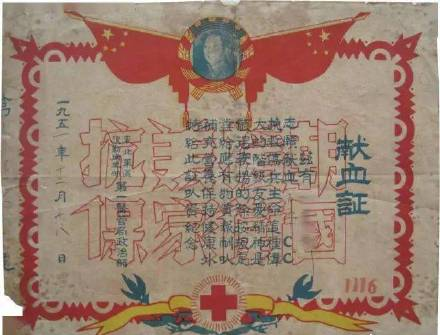
4. Join the army! Participate in construction! Go to the front line!
At the end of October 1950, Shenyang began to recruit new soldiers to expand the troop. The Municipal Party Committee, Municipal Government, and relevant agencies of industry, agriculture, youth and women affairs formed a committee to coordinate the recruitment. That year, the first batch of recruits required from the city was 1,850. After the mobilization, people actively signed up to join the army, with 1,419 from suburban areas, 213 from labor unions and 258 in urban areas, totaling 1,890 that exceeded the task. According to statistics, a total of 3,872 young people in Shenyang joined the CPVs throughout the War.
In 1950, in order to meet the needs of the War, Shenyang assumed the responsibility of building three military airports in Yuhong, Beiling and Dongta. The Municipal Party Committee set up a construction committee, mobilizing more than 20,000 laborers and more than 1,000 vehicles of various kinds every day to finish these three airports in a timely manner. During the construction of the three airports, in addition to mobilizing government officials, industrial employees, mining workers and students to participate in voluntary labor, a total of 783,000 laborers, more than 5,000 vehicles and more than 89,000 carriages were mobilized for this effort. Although there was no advanced machinery or equipment, the laborers overcame many difficulties and fought days and nights to complete construction ahead of schedule, thanks to the strong support from the people in Shenyang.
From the end of 1950 to 1951, Shenyang mobilized and organized 1,089 car drivers, 330 automobile mechanics, 132 translators, 103 cooks, 905 air defense correspondents as well as medical staff members, bridge mechanics and train drivers, totaling 3,539, went to the front line on the battlefield, so as to ensure both material supply and human resources for the War. For example, the Shenyang Bridge Factory dispatched more than 260 bridge mechanics to form a Bridge Repair Team for Resisting the US and Aiding Korea. In two years, despite indiscriminate bombardment of enemy aircrafts, they successively repaired the DPRK’s Cheongcheon River Bridge and Daling River Bridge as well as railway bridges in Wancheng, Dingcheng, Baimazhuangcheng and Qingshui.
Moreover, on the battlefield during war, there were also a heroic team consisting of workers from Shenyang. They braved the enemy’s artillery fire, carried stretchers and shuttled through the smoke-filled battlefield. From the front line, they rescued the wounded, quickly loaded them onto cars or trains, and transported them to the rear for treatment; at railway stations, parking lots and warehouses, they nervously loaded, unloaded and moved material supplies. Beside railways and highways, these workers kept carrying out emergency repair to ensure that the transportation network were always in operation. These ordinary people made a huge contribution to guaranteeing the transportation for the War.
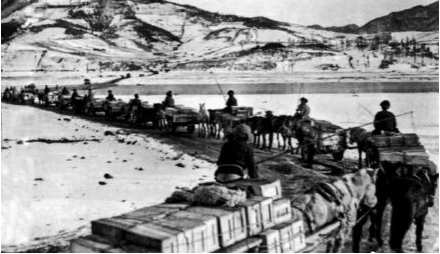
5. Promoting the patriotic convention by donating aircrafts and cannons
In the War, the people of Shenyang were supporting the front line with practical actions of “supplying what is needed in the front”. On April 10, 1951, the Shenyang Branch of the Chinese People’s Association to Resist US Aggression and Aid Korea was established. Workers, peasants, government officials and residents in the city enthusiastically responded to the call of “promoting the patriotic convention by donating aircrafts and cannons”. They enlarged the scale of production and generously donated what they had to the country. More than 1.2 million people signed a patriotic convention, and more than 500,000 people participated in donations.
The people of Shenyang donated manpower, money and food that they had. According to statistics, donations from all walks of life in the city could buy 62 fighter jets, exceeding the original plan of donating 38 fighter jets. At the same time, people in Shenyang also donated 300,000 supply bags, 120,000 books and periodicals, more than 17,500 kilograms of raw pork, 200,000 kilograms of fried flour and 22,255 kilograms of cooked meat.
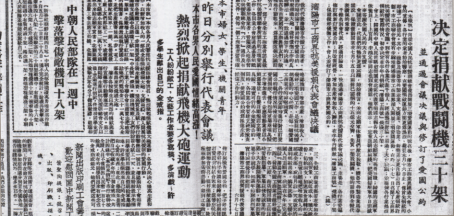
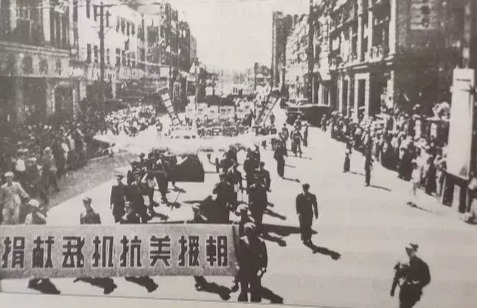
6. More production and greater thriftiness for guaranteeing material supply for the War.
In October 1951, Chairman Mao Zedong issued a call to the people of the whole country: more production and greater thriftiness for guaranteeing material supply for the War. The CPC Shenyang Municipal Committee and Municipal Government responded immediately. The campaign, centering on production and promoting more production and greater thriftiness, unfolded with great dynamism in the form of and patriotic production competition. This movement greatly strengthened the enthusiasm of cadres and workers for production. According to statistics, in 1951 and 1952, the vast number of cadres and workers in the city saved a total of 7.2 million tons of food for the country and finished the task of military supplies to fully support the War.
In addition, in order to further improve labor productivity, Shenyang also launched an innovation campaign on new inventions and good suggestions. A great deal of advanced experience (totaling 108 items) have been promoted and 77,772 good suggestions were put forward by employees, which effectively boosted economic construction and social development.
iii. Shenyang built a number of cemeteries where martyrs, who sacrificed their lives during the War, could rest in peace.
At the beginning of 1951, the Northeast People’s Government decided to build cemeteries for the martyrs who sacrificed their lives in the War in Dandong, Shenyang and other places. The Shenyang Cemetery for Martyrs in Resisting US Aggression and Aiding Korea was completed in August 1951, being the largest cemetery where fallen CPVs could rest in peace. Here rested 123 martyrs, including super heroes Huang Jiguang and Yang Gensi, first-level battle heroes Qiu Shaoyun, Sun Zhanyuan, Yang Liandi, etc. There is also a 130-meter-long wall engraved with the names of more than 170,000 martyrs. In recent years, it has become the burial place for the remains of 825 martyrs in eight batches handed over by the ROK government.
On February 24, 1953, three martyrs Sun Zhanyuan, Huang Jiguang and Qiu Shaoyun were transported to Shenyang. The Shenyang Municipal Government established a funeral committee and held a large-scale and solemn public gathering to commemorate them. From March 3 to 5, 1953, the public memorial meeting lasted for two and a half days. A total of 145 organizations and more than 27,000 people participated in the public memorial. In a sense, such a public memorial was Shenyang’s tribute to all those who sacrificed their lives, just like these three martyrs.

II. The War: Tempering of the Integrity, Determination and Dynamism of Shenyang as a Heroic City
The victory on the War brings us an important insight: no matter how advanced the enemy’s weapons and equipment are, they cannot replace the spiritual power from people’s determination to fight. Only by creatively using soft power based on a certain material basis, maximizing our nation’s spiritual strength and mobilizing people’s initiative, can we finally reach victory.
The CPVs had poorly-equipped weapons but high morale while US soldiers had advanced weapons but low morale. The former defeated the latter by their iron-like determination, and fostered a grand spirit during the War. This has become the spiritual treasure for the Chinese nation, particularly for Shenyang who established its distinctive style featuring integrity, determination and dynamism.
Participating in the joint efforts for fighting the War, Shenyang not only played the role of a strategic production base and a logistics support center, but also inspired its people in their life and work as well as many other aspects their patriotism and hardworking spirit covering unity, determination to fight, bravery for shouldering heavy responsibilities, sense of duty, dedication to the country, self-reliance, and social commitment. These spiritual characters have profoundly influenced and shaped the City of Shenyang, particularly by fostering the heroic gene and spiritual strength in its culture featuring integrity, determination and dynamism.
1. Known as “Eldest Son of the PRC for Industrial Construction”, Shenyang passed the tempering test of the War.
The fierce battling in the War put forward many rigid demands for the newly established PRC. As a strategic production base, Shenyang needed to produce what was needed in the front. The people of Shenyang played an important role in this process and forced themselves to continuously improve the industrial system, which then took the lead in the early stage of China’s national industrialization, with machine tools, electrical appliances, equipment manufacturing and aviation devices as core items produced here in Shenyang as a key national industrial base.
During China’s First Five-Year Plan period, the country devoted 1/6 of its financial resources here. Among 156 key projects aided by the Soviet Union, six projects including the Shenyang Aircraft Manufacturing Company (the later SAC), Shenyang Liming Aero-Engine Group Corporation, and Shenyang No. 1 Machine Tool Factory were established in the city. More than 100 firsts were made here, including the first turning engine lathe and the first jet plane.
Shenyang thus took the lead in China’s own industrialization and equipment manufacturing, established its status as the “Eldest Son of the PRC for industrial construction”, and forged its spirit for responsibility and dedication. In the process of the building of the country and the development of reform and opening up, Shenyang has always acted as a leading example, assumed its due responsibility and shouldered the heavy burdens without complaining.
2. During the War, people in Shenyang formed their spiritual character and temperament: the sense of responsibility, the bravery to face difficulties and the dedication for contributing to national affairs.
During the War, the CPC Shenyang Municipal Committee and the Municipal Government organized and carried out various kinds of campaigns, particularly by the patriotic convention for more production and greater thriftiness as well as holding patriotic production competitions. The industrial and agricultural sectors developed by leaps and bounds in this period, while the national economy recovered rapidly from devastation. The campaigns greatly mobilized the enthusiasm of Shenyang people to support the War. In the industrial side, workers participated patriotic production competitions, and promoted more production and greater thriftiness while in the agricultural sector, farmers held patriotic yield competitions. More than 1.2 million participants signed the patriotic convention, including workers, peasants, government officials and residents from the city.
More than 500,000 people participated in the contributing of airports, the preparation of fried flour, the making of military uniforms and the delivery of material supplies. Meanwhile, people in Shenyang organized the donation of fighter jets and cannons. Inspired by the slogan “There is no unfinishable tasks, unsolvable challenges and unbeatable enemies”, people in Shenyang rose to the challenge, overcame difficulties and completed every task assigned to them to support the War. All these challenges did not beat the city but helped forge the city as one being positive, optimistic, enterprising, determined, responsible and dedicated and tempered its precious characters such as, the sense of ownership, dauntlessness and meticulous craftsmanship.
While the country was facing a dire situation, the people from Shenyang did not move back but show courage, determination, ambition, confidence and other heroic characters to stand up, take the lead and shoulder the responsibility. The smoke of war has long dissipated, but the Great Spirit in the War to Resist US Aggression and Aid Korea have already been integrated into the blood of people in the city and become the most precious spiritual assets of Shenyang.
3. The tempering test by the War made the spirit of model workers an important spiritual core of the heroic city of Shengyang
During the War, the patriotic production movement represented by the patriotic production competition was an important way for Shenyang to participate in the War as an important strategic production base. It is in such a broad patriotic production movement that more and more model workers and advanced producers emerged, such as Zhao Guoyou, the creator of record-breaking movement, Ma Hengchang, a leader of the National Model Worker Group, Ma Deyou, a groundbreaker in the aviation industry, Lyu Qubing, China’s first-generation anti-tank rocket expert, Wang Feng’en, a role model for national industrial production and construction and Yu Fengying, a model worker honored as a “good worker of Chairman Mao”.
The typical characteristics of model workers include a high sense of ownership and responsibility, prominent creativity in production and selfless dedication to the country. People in Shenyang, represented by model workers, have always carried forward their patriotism by putting the interests of the country and the people above anything else as well as by striving for the dignity of the motherland and the nation at any cost; their heroic spirit by daring to sacrifice their lives for defending the country; their optimistic spirit by bravely facing all kinds of hardship and keeping an upbeat morale; their loyalty to the revolution by fulfilling the mission entrusted by the motherland and the people at the expense of anything else; as well as their spirit of internationalism by fighting for the cause of peace and justice for all mankind.
Through their contribution to the War, people in Shenyang fulfilled their responsibilities for defending the country with practical actions in increasing and innovating industrial production. The War provided a bigger stage for model workers, who made greater contributions. Meanwhile, the War testified both the spirit and the skill of model workers, making it an important part of the city’s spirit and the force to support its responsibility and dedication as the “Eldest Son of the PRC for industrial construction”. Since the founding of the PRC, Shenyang has produced nearly 30,000 model workers (times) at or above the municipal level.
Model workers from all walks of life in Shenyang have composed a series of heroic stories, vividly interpreting the creativity, the determination, the solidarity and the adventurousness of the citizens as well as fully demonstrating China’s national spirit with patriotism as the core and the spirit of the times with innovation as the core. In short, all of these features give the people in Shenyang never-ending momentum to carry forward the past, march into the future, overcome all kinds of difficulties and bravely forge ahead.
4. In memory of the heroes in the War, Shenyang has become a holy place to carry forward the spirit of the War.
The Shenyang Cemetery for Martyrs in Resisting US Aggression and Aid Korea is an important national memorial site and patriotic education base. The heroic deeds of the CPVs represented by super heroes Huang Jiguang and Yang Gensi, first-level battle heroes Qiu Shaoyun, Sun Zhanyuan and Yang Liandi are always inspiring and encouraging for the people of Shenyang. Protecting the soul of heroes, advocating the spirit of theirs, loving them, learning from them, striving to become heroes and staying with heroes have become the background color and defining character of Shenyang, a heroic city. On every Tomb-Sweeping Day (the Qingming Festival), the Memorial Day on the War to Resist US Aggression and Aid Korea or the Memorial Day of Martyrs, cadres and citizens from the Province, Shenyang, troops stationed in the city, soldiers from the Liaoning Military Region and people from all walks of life would come to hold a grand memorial ceremony.
All year round, there will always be relatives of the martyrs during the War coming to Shenyang from all over the country. Year after year, day after day, people have heart-to-heart exchanges and dialogues with the martyrs. Their heroic deeds inspire the people for self-motivation and self-improvement, which has already become an essential part in Shenyang’s character. The learning of martyrs produces even more heroes today. Therefore, Shenyang has become a holy place to commemorate the heroes, to promote their spirit, to revisit their heroic deeds, to inherit the revolutionary gene and to build a strong spiritual pillar for the nation.
The great spirit in the War transcends time and space, giving new inspirations for the generations to come. Today, we stand at the historical crossroads of realizing the two centenary goals, and the road ahead will not be smooth. In the face of great changes unseen in a century, the heroic city of Shenyang must once again present its bravery and determination; its unity and dedication; its sacrifice and fortitude as well as its innovation and self-reliance, so as to provide inexhaustible impetus for the city’s comprehensive revitalization.
The original text was published on the Shenyang Daily on May 20, 2022

About The Author
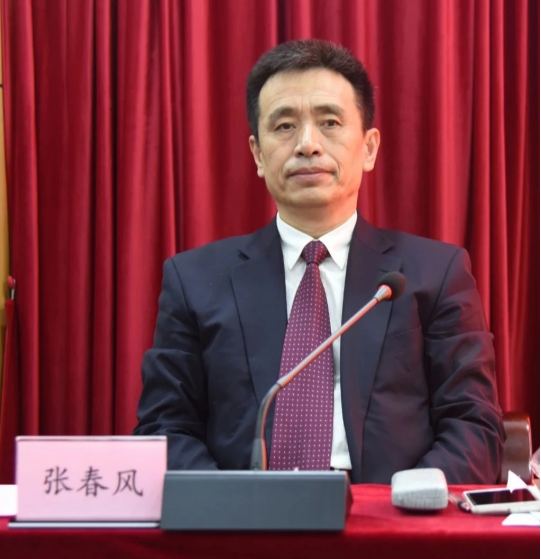
Zhang Chunfeng, Director and Party Committee Secretary of Shenyang Municipal Archives (Shenyang Municipal Institute for Culture and History), used to serve as Director of Shenyang Civilization Office, Deputy Director of the Publicity Department of the CPC Shenyang Municipal Committee and Editor-in-chief of Shenyang Daily.
Mr. Zhang has produced a great number of historical documents and archival books, including:
Impression of Shenyang, a cultural product in three-dimensional full-reading mode (chief editor);
One Hundred Classic Poems Praising the City of Shenyang (chief editor);
Shenyang Historical and Cultural Classics (volume 8, 9, 10 and 11, leading compiler);
Archives of Japanese Aggression in Shenyang before the September 18th Incident (five volumes, chief editor);
Pictures and Archives of the Huanggutun Incident (chief editor);
Archives of Japanese Invasion and Shenyang’s Resistance (two volumes, chief editor);
Red Memories on the Black Land: Compilation of Oral Archives of People Who Witnessed the Northeast Anti-Japanese Volunteer Army and Northeast United Resistance Army (two volumes, chief editor);
Selected Archives for Huang Xiansheng – a General Against Japanese Invasion (two volumes, chief editor); Selected Archives for Hero Zhang Fengqi – a Fighter Against Japanese Invasion (two volumes, chief editor);
Compilation of Shenyang’s Construction Archives during the Warlord Period of the Republic of China (five volumes, chief editor);
Compilation of Shenyang’ Liberation Archives for the 100th Anniversary of the Founding of the CPC (chief editor).